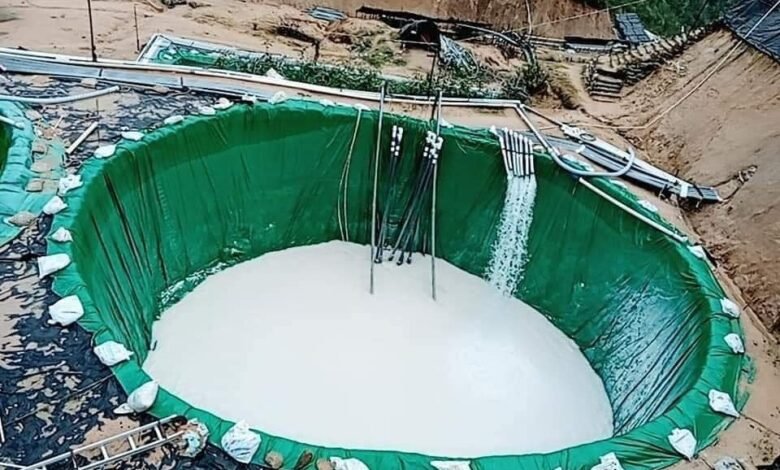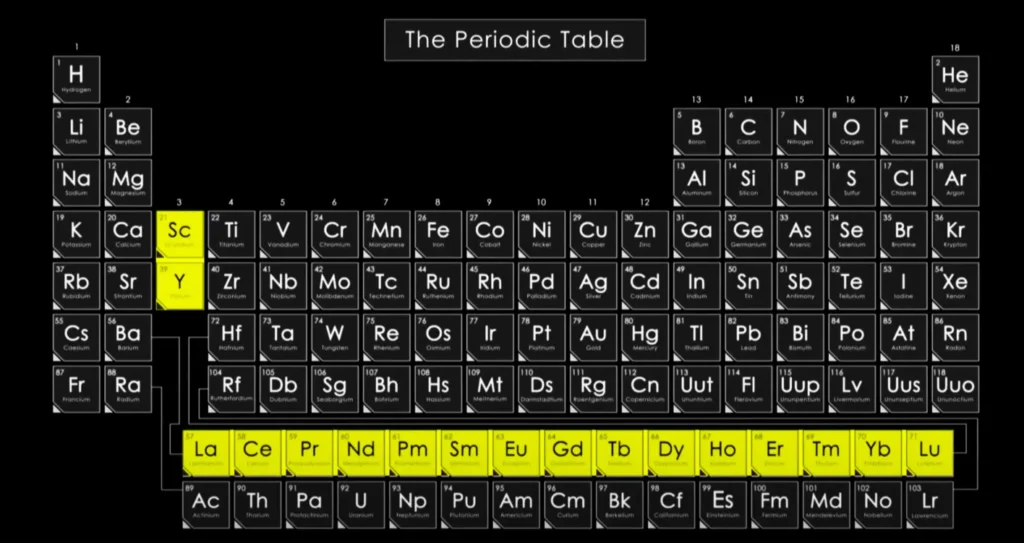
Rare earth elements (REEs) play a pivotal role in the manufacturing of high-tech products, and China has dominated the majority of the market. Efforts by the United States, Australia, and their allied countries aim to reclaim a share of the REEs market from China.
According to a 2022 report from the United States Geological Survey, Burma ranks as the fourth-highest exporter of rare earth in the world. However, the government has not officially granted licenses for its extraction and does not disclose information about the export of REEs. Yet, China’s customs department reports importing a significant portion of its rare earth from Burma. It reported that REEs valued at $803 million was exported from Burma in 2021, $604 million was taken in 2022, and $1,202 million from January to October 2023.
The illegal extraction of rare earth is a growing issue for Chipwe and Hsawlaw, both of the townships in Kachin State are bordering China’s Yunnan province. According to Global Witness, exports of REEs by the military to China were only $1.5 million in 2014, as compared to $780 million in 2021.
While both China and the US wield the rare earth market as a political tool, the local population in Kachin State sees little benefit from the mining of rare earth, and, in contrast, faces the environmental consequences of its toxic waste.
What is Rare Earth?
REEs consists of 17 elements found in the periodic table, with atomic numbers ranging from 57 to 71, plus elements 21 and 30. These elements are integral to various high-tech products and military weapons, such as guided missiles. Discovered in the 19th century, they became essential with the invention of colour TV in the 1960s.

In Kachin State, dysprosium and terbium are present in the Pangwa Region. Dysprosium, known for its powerful magnetic field, is utilised in electric vehicles, wind turbines, and jet fighters. Terbium finds application in modern TV screens and smartphone displays. These 17 REEs are present beneath the earth’s surface, and extraction is currently taking place in various countries, including China, Vietnam, Australia, and the US.
As the world emphasises clean energy due to global warming concerns, China has emerged as a leading exporter of electric vehicles and electrical products. Notably, China supplies 90% of the REEs bought by Tesla, which is owned by the billionaire Elon Musk.
Despite the US’s need for a stable rare earth supply, meeting the demand remains challenging due to delays in the extraction and refining processes. US and Australia companies also adhere to strict environmental and natural conservation policies, contributing to the challenges in providing a steady supply of rare earth for the industry.
Extracting REEs
There are two methods to extract rare earth. The first is the open pit method, which excavates the upper surface of the earth to uncover it. The second method is the ‘in-situ leaching’ method, which drills holes into the earth and fills them with acid. In Kachin State, the second method is utilised for extraction.
A Kachin youth, who worked in a rare earth mine in Chipwe and Pangwa region, revealed, on condition of anonymity, that before drilling earth holes and pouring acid, Chinese conducted tests to ascertain the presence of rare earth elements in the area.
“We have to dig a 10-metre deep hole at the designated area and take soil samples for testing. If the results are favourable, we will drill a big hole in the earth and pour acid into it,” he shared with KNG. “After digging holes on the mountain, we must dig holes at the base of the mountain. Then, we connect water pipes to each hole on the mountain. After that, we pour ammonium sulfate acid into these holes. Subsequently, we collect the acid and other substances at the mountain’s base.”
The second stage, he said, involves transferring the mixed liquid to a pond and combining it with ammonium carbonic acid. The mixture is then left in the pond for 1-2 days. In the subsequent phase, the settled rare earth substance is burned after the water has evaporated.
“The smell of acid is really bad and it is hot too. Over time, it’s not good for miners,” another miner also requesting anonymity told KNG.

Chinese managers oversee the whole operation, and Burmese workers who can speak Mandarin lead the labourers in the mines. The salary for a Burmese worker in charge is 6,000 yuan per month ($846), which is equivalent to about 1.7 million kyat per month. The labourers, primarily aged between 18 and 30, earn approximately 390 yuan ($55) per month. Female labourers often are employed to cook for the mining crew, but some of them also monitor the water pipes inserted in the holes in the mines.
Rising Illegal REE Extraction Amid SAC’s Lawlessness
According to Global Witness, in 2022, satellite images revealed 2,700 acid ponds in Chipwe and Pangwa covering an area about the size of Singapore.
The University of Delaware released a research paper highlighting the surge in rare earth mining along the China-Burma border. The paper noted that the vehicle roads in the rare earth mining area were directed towards China and did not connect with the rest of Burma.
People’s Militia Forces and Border Guard Forces, operating under State Administration Council (SAC), control the areas where the mining is happening. They profit off these enterprises and also target any civilians opposing the mining, sometimes by abducting them. Following the military coup, extracting of REEs has intensified in these two townships.
Kachin civil society organisations have highlighted the ineffective administration of economic projects invested by China by the Kachin State government under the National League for Democracy (NLD). But this problem has grown under SAC despite the absence of an official REEs licence for Kachin State.
Even though both SAC and Kachin Independence Organisation (KIO), which is fighting against the regime, have gained substantial income from exporting rare earth annually, both entities have yet to officially disclose these figures.
KIO halted the testing process for rare earth extraction in the Ding Sing Pa area of Mansi Township, Kachin State, in April 2023 after local protests. Locals also opposed rare earth mining in the Chipwe and Hsawlaw areas within the territory of the KIO’s military wing, the Kachin Independence Army Brigade 7.
In Pangwa, REEs extraction is controlled by the military regime.
Impacts of Rare Earth Extraction on Health and the Environment
The Malaysian government closed a rare earth refinery factory in 1992 due to local opposition. The closure was prompted by radioactive leaks causing birth defects in pregnant women.
Subsequently, governments worldwide shuttered rare earth extraction mines and refineries due to radioactive leaks. China, particularly Yunnan Province, saw numerous rare earth extraction mines from the 1980s. However, in 2012, the Chinese government imposed restrictions after miners failed to comply with regulations.
Post the Yunnan closure, businesses shifted investments to Kachin State in Burma. Chipwe and Hsawlaw townships, located in eastern Kachin, host mountainous regions with rare earth deposits. Chipwe Creek and other waterways flow into the Maykha River, which eventually merges with the Maylikha River near the village of Tang Hpre, situated 28 miles distance from Myitkyina. This confluence forms the Irrawaddy River, traversing from Kachin State to the Irrawaddy Region’s delta through the country’s middle.
Researchers have found waste caused by rare earth extraction adversely impacts the natural environment, animals, and local residents in the mining area. It pollutes both the water and the air, hindering the growth of vegetables and plants, thereby affecting local businesses. The acid waste from the refinery process flows into creeks, causing harm to animals and contributing to landslides in the mining area. Residents in the upper part of Chipwe and Hsawlaw region face a critical shortage of water sources due to the impact of rare earth mining. Consequently, they are unable to utilise water from creeks in their area.
“The smell of acid is so strong. It affects the lungs and the liver. My friend told me that he suffered bleeding from his nose,” the Kachin youth said. He said that animals cannot survive in the toxic waste-laden mining areas.
The Future of REEs
Powerful nations seek REEs for high-tech products, defence manufacturing, technological innovation, and electrical energy, as they strive to reduce dependency on fossil fuels. China has invested significantly in rare earth mining and refinery for the last three decades. While the US government can extract raw ore of rare earth, it continues to send the ore to a refinery in China until 2023.
In 2020, President Donald Trump issued an emergency order to reduce dependency on China for REEs. Despite this, experts contend that the US faces challenges in competing with China in extraction and refining.
According a report by Bloomberg News, China’s commitment to electric vehicles is evident, with half of all buses expected to be electric by 2026. China aims to replace more fuel-powered vehicles with electric ones in 2024, reducing petroleum consumption by 300,000 barrels.
Whose Responsible For REEs Extraction in Kachin State
The oversight of natural resources management falls under the government’s purview as per the 2008 Constitution in Burma. Nonetheless, local suggestions in Kachin State propose that the KIO should finance its revolution through jade mining instead of rare earth mining.
Rare earth mining in Kachin State is operating outside of the law. Consequently, this also allows businessmen to evade responsibility for environmental damages, and for local communities to derive minimal benefits from these projects. Substantial financial assistance over several decades will be required to clean the toxic-affected water, air, and soil in Chipwe and Pangwa regions.
The failure of the NLD government to effectively manage REEs mining in Kachin State is apparent. But now, with the military junta currently in power, there is even less concern about these illegal operations in Kachin State. Consequently, REEs from Kachin State continues to be supplied to China, perpetuating the adverse environmental and social impacts related to these unlawful and dirty activities in Chipwe and Hsawlaw townships.




